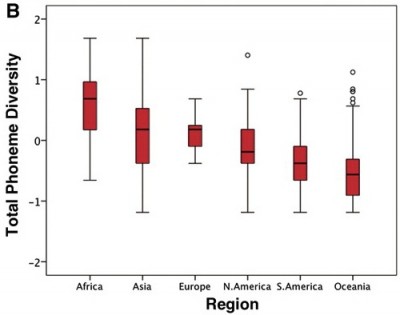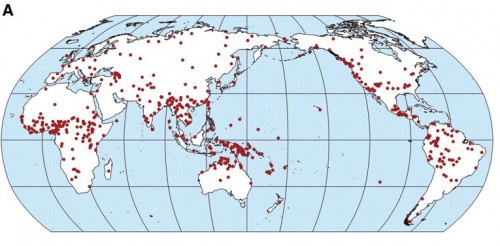Digging Up the Roots of Language
For years, linguists believed it impossible to trace the genealogy of human language past about 9,000 years ago, when Indo-European tongues split somewhere near present-day Turkey. A new study out of the University of Auckland indicates that split is but the first among many, in a tree whose roots extend all the way to southwestern Africa, some 70,000 years ago.
It’s the work of linguist Quentin Atkinson, who sought to explain the connection between the size of populations and the complexity of language; specifically, that smaller populations use languages with fewer sounds.
The study is groundbreaking in that it removes a roadblock standing in the way of linguistics, proving that when humans migrated from Africa they came with one language. It also links genetic and language diversity. As populations spread from Africa, and groups broke off to colonize separate regions of the planet, genetic diversity decreased. So did the complexity of language apparently.
Atkinson’s study is based on phonemes, distinct sounds — consonants and vowels, but also tones — that are the building blocks of language, the smallest units of sound that differentiate the meaning of things that sound similar. The languages with the most number of phonemes are those originally spoken in southwestern Africa, while those with the least are found in the most remote parts of the planet, the ones that took humans the longest to colonize. So while some of the ancient click languages of African bushmen have more than 100 phonemes, languages native to places like Hawaii, the South Pacific and South America have as few as 13.
Though groundbreaking, in a way the study’s findings seem obvious, in that they trace the origin of language to Africa. Is it any wonder that the continent where humans first evolved is also the birthplace of our first language?
Here are two graphs, courtesy of the journal Science, which recently published Atkinson’s results. The map shows the location of the 504 languages that Atkinson sampled for phoneme data. The box plots below show the overall phonemic diversity by region, revealing the differences between regions closest to Africa, and those farthest away.



Comments